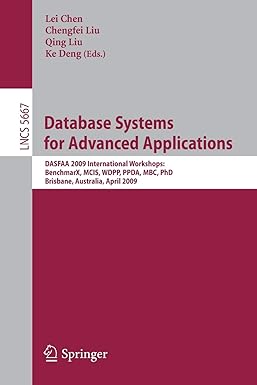Answered step by step
Verified Expert Solution
Question
1 Approved Answer
In this lab we will explore how polymorphism works in Java programs. We will also learn about abstract classes and methods. Finally, we will learn
In this lab we will explore how polymorphism works in Java programs. We will also learn about abstract classes and methods. Finally, we will learn about "protected" a new access modifier. There are no starting files for this lab.
We will use polymorphism to help us write a program dealing with several different shapes. We will work with triangles, rectangles, and ellipses. Each of these shapes has similar properties. They each have a height, width, and area. What is different about each shape, however, is the process for calculating the area.
Part Shape Class
First, let's write a Shape class to represent the common aspects of all shapes. The Triangle, Rectangle, and Ellipse classes will all inherit from the Shape class. We will make the Shape class abstract which means we will not be able to instantiate it When we want to make a shape, we will need to instantiate one of the concrete classes: Triangle, Rectangle, or Ellipse.
Write a Shape class and declare it abstract The class header should look like this:
public abstract class Shape
Include the following protected instance variables:
height double
width double
area double
Note: usually we make instance variables private, but in this case, we want to allow descendants of the Shape class classes that inherit from Shape to have direct access to the instance variables. We can do this by declaring them "protected" instead of "private". Example:
protected double height;
Include at least one constructor, and include get and set methods for the height and the width. The area data member also needs a get method.
Write a toString method that returns a String containing the shape's height, width, and area formatted nicely
Finally, declare an abstract method called calculateArea. This method will not take in any parameters or return anything. Its job is to calculate the area of the shape and store that value in the area data member. However, we cannot write the code for this method because we do not know what type of shape we are dealing with. We will declare the method "abstract". This means that any concrete class that inherits from Shape will have to implement this method. The method header should look like this:
public abstract void calculateArea;
Part Concrete Classes
Next let's work on our concrete classes. These are the Triangle, Rectangle, and Ellipse classes, which will represent specific types of shapes. Create these classes in your project. They should each inherit from extend the Shape class. In each class, write a calculateArea method. The calculateArea method should contain the code necessary to calculate the area of the particular shape and store the value in the area instance variable. Here are the various area formulas:
Triangle Area height width
Rectangle Area height width
Ellipse Area pi height width
Remember you can use Math.PI to get the most accurate value of pi in your program. You do not need anything other than the calculateArea method in these three classes.
Part Main Class
Now that you've created your abstract class and three concrete classes, let's test them and see how they work. Create a main class and write code that does the following:
Create an ArrayList to store Shape objects.
Ask the user what kind of shape they want to create.
Prompt the user for the height and width of the shape.
Create the appropriate Shape object, set the height and width, and store the object in the ArrayList.
Allow the user to continue creating shapes until they are finished.
Write a loop that iterates through the ArrayList and calculates the area of each shape by calling each object's calculateArea method
Write a loop that iterates through the ArrayList and prints information about each shape to the screen using the toString method
Part Another Class
Add in an additional class that inherits from the Shape class not a Circle
Step by Step Solution
There are 3 Steps involved in it
Step: 1

Get Instant Access to Expert-Tailored Solutions
See step-by-step solutions with expert insights and AI powered tools for academic success
Step: 2

Step: 3

Ace Your Homework with AI
Get the answers you need in no time with our AI-driven, step-by-step assistance
Get Started


